" The ‘umbrella on wheels’ or the ‘tin snail’, the unmistakable Citroën 2CV has also been a 24-hour endurance racer, a James Bond film star, a delivery van, a beach buggy-type fun machine, and, in twin-engined four-wheel drive ‘Sahara’ versions, "

The Evolution of the Citroën 2CV
The car that stayed the same and changed for over half a century. We look at the 2CV and its glacial evolution...
The 2CV was famously conceived by Citroën President Pierre Boulanger to drag the French farming population into the modern era – but in introducing this car he unwittingly created one of the most enduring archetypes of global car culture. For the French of course it was, and remains, one of the vectors of national identity – shot through with the relentless rationality that the French think of themselves as having. It is of course a simple formula. Small, economical engine that can be fixed easily. A modular panel construction that’s easy to screw back together. Long travel suspension that gives an easy ride over everything from ploughed fields to rutted lanes. And of course a rag-topped aspect that eschews security and luxury for the most down to earth motoring experience.
In many ways the 2CV is the summing up of the French love for the Bagnole – a reliable and irreducible banger that serves a utilitarian purpose. It is in effect a gallic shrug toward pretence. And although the 2CV’s details have shifted over the fifty years it was produced – in essence it always remained the same. But the reality is, also, that the simple underpinnings of the Citroën 2CV provide the key element of millions of other cars – from the Dyane to the Ami and the Mehari – that have tugged at the Francophile hearts of the faithful all over the planet.
What follows is a far-from-definitive trail of subtle 2CV evolutions. Please point out our mistakes, dear reader – as you always, so reliably, do.
1939-41: The Prototype
The ‘Cyclops’ was, according to most sources, the first road-going prototype of the Citroën 2CV – and it appeared some time between 1939 and the invasion of the Germans in 1940. Apparently the single light was initially placed in the centre of the hood. This was dangerous of course, and so the lamp was moved to the left to be clear to oncoming traffic.
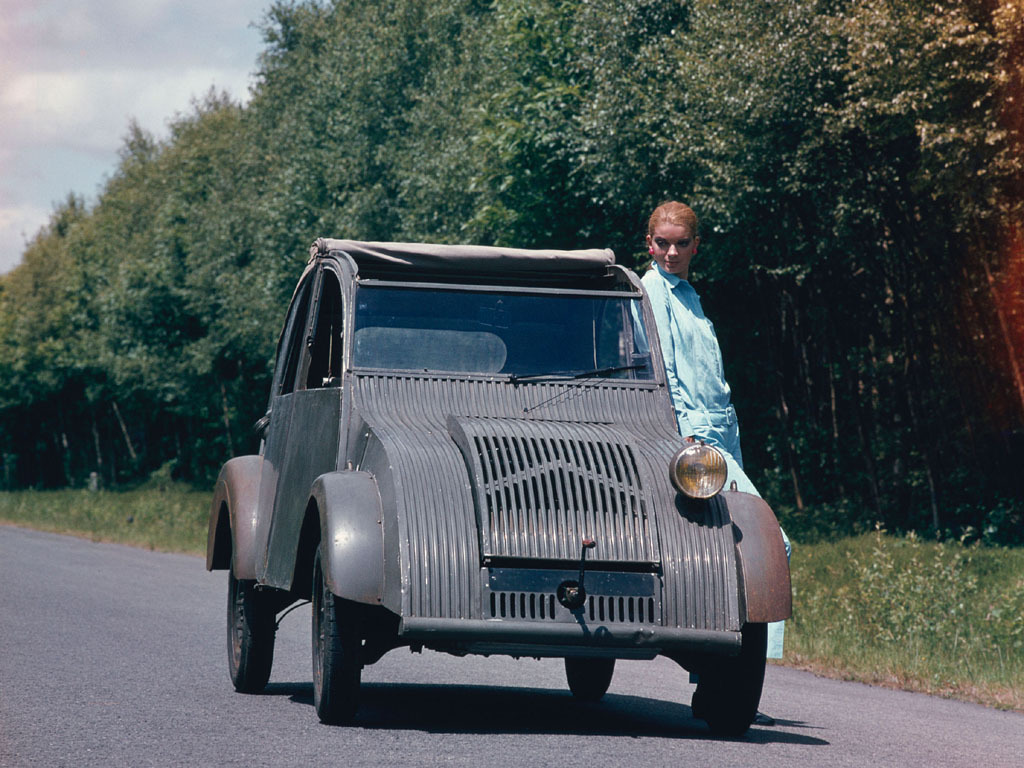
1949: The Original
Manufacture of the first production 2CV began in 1949. The engine was a twitchy 375CC and initial production was limited to only 4 per day. This meant that waiting time for the miniature hero reached up to 7 years.
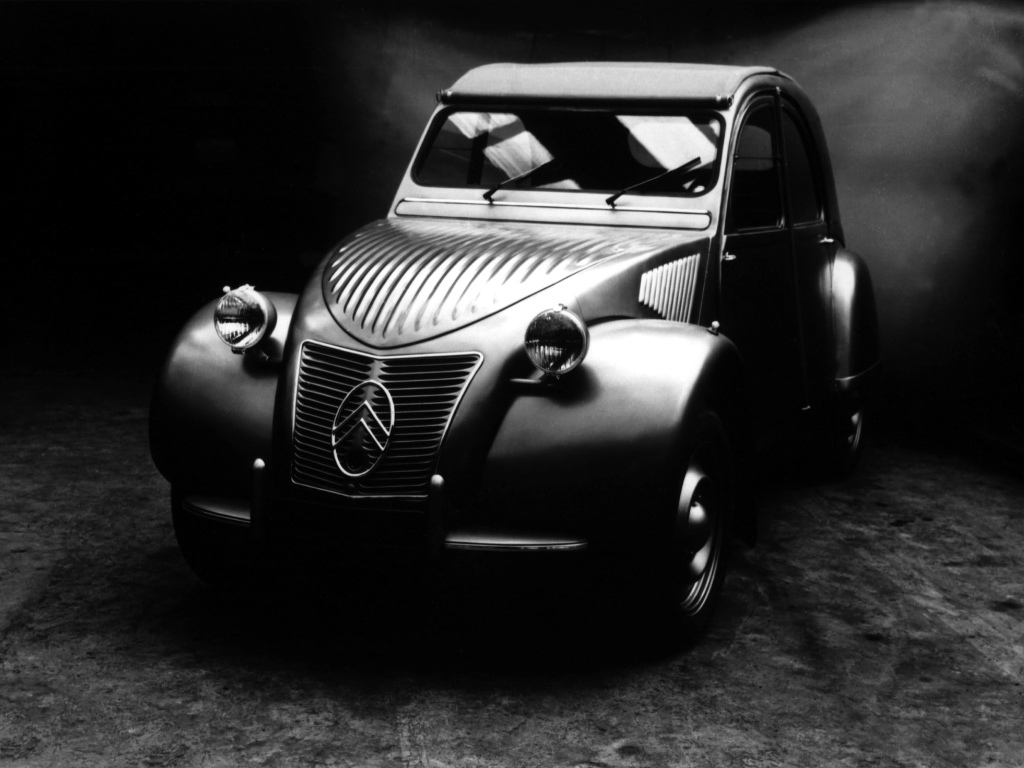
1950: The Fourgonette
the Fourgonette, the van version of the 2CV with its trademark corrugations, was released. Designation was officially the 2CV AU (for Utility).
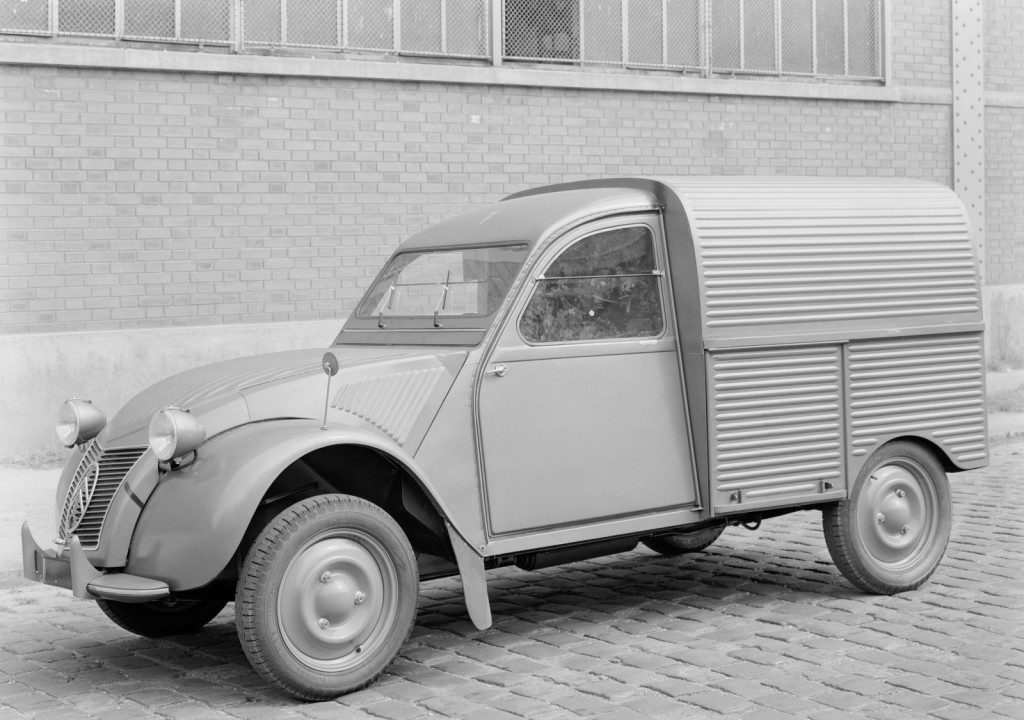
1956
the 2CV AZL, designated as a luxury version of the car, was released. It came with a new hood and a defroster for the windscreen. There’s posh.
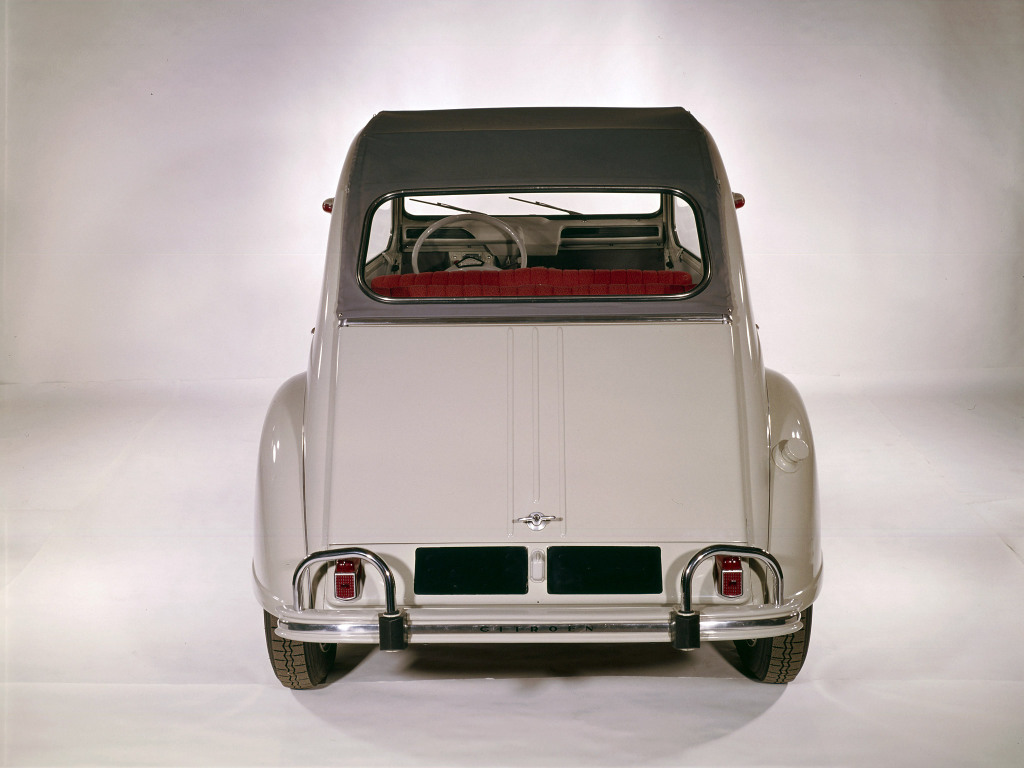
1958-1960: The Safari 4×4
Citroën shocked the world at the end of the fifties by releasing a all wheel drive version of the car, with a second engine in the boot to drive the rear wheels. This didn’t prove very popular, and production ceased in 1966.
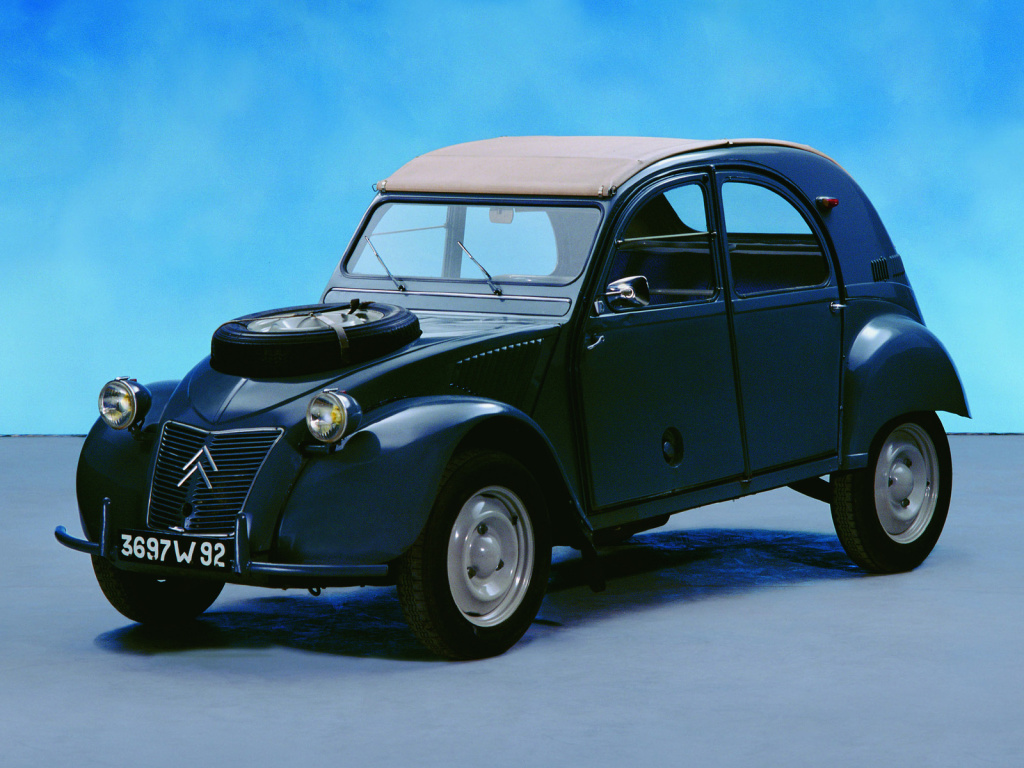
1964-6: The 2CV6
In the mid-sixties the car came with a new grille with three horizontal slats, and the hood came with five ribs. The model is now designated AZA.
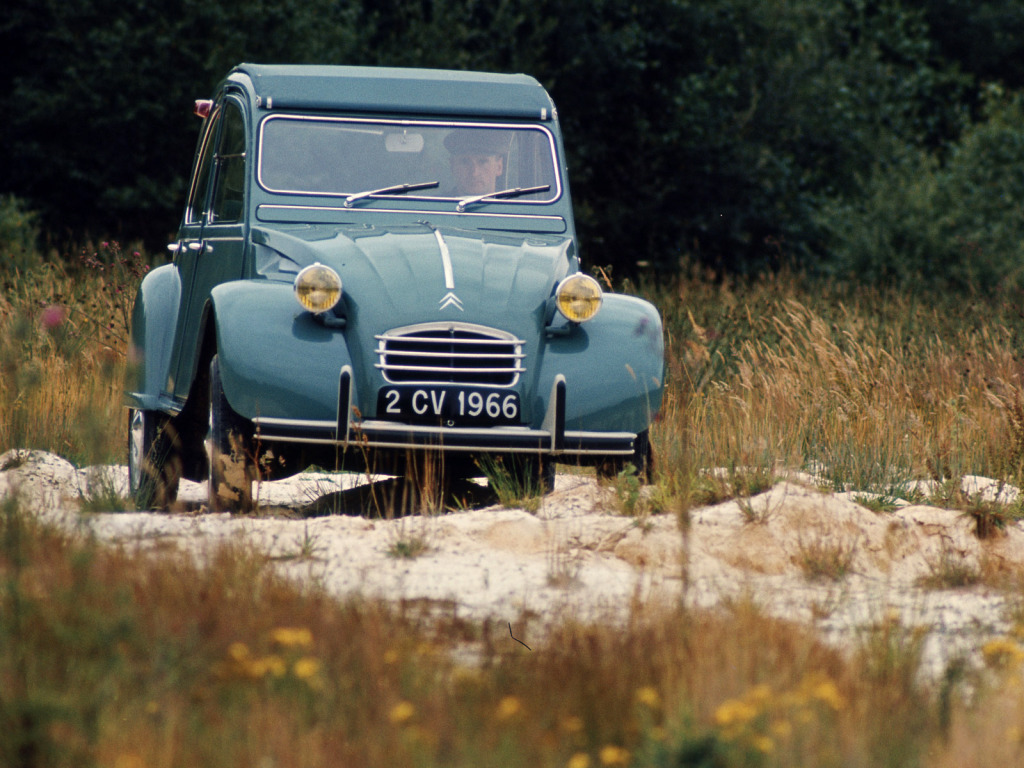
1970
With the coming of the new decade the car achieves the height of its production, and Citroën released the 2CV4, with a 435cc engine and the 2CV6, which came with a 602cc engine. There was a new locking system, seat belts in the front and round headlights were adopted.
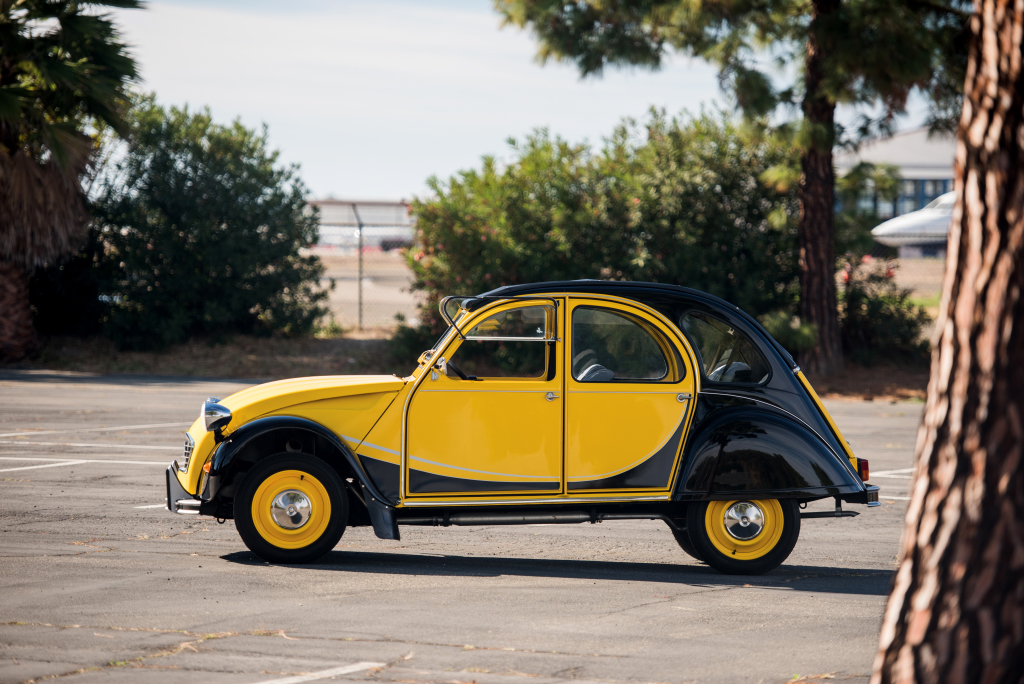
1979: Especial
At the end of the decade the ‘Special’ was released, and the 2CV 6 changes its name to the ‘2CV Club’.
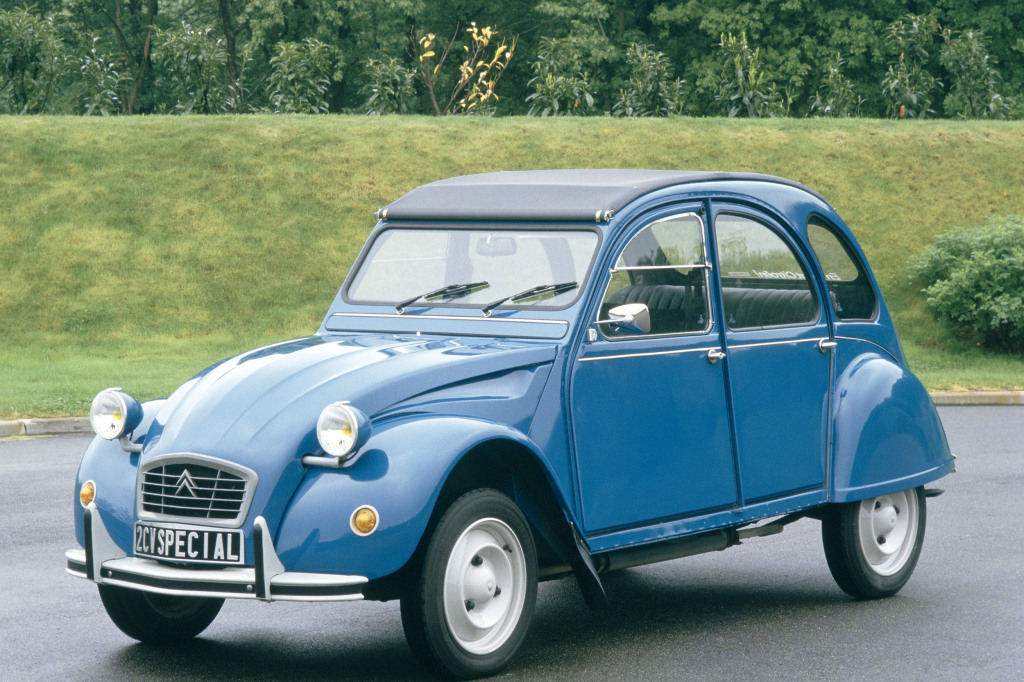
1980-1982: The Charleston
The 2CV Charleston is released with the coming of that maligned decade. Now there is a chrome headlight trim and a general retro look. The car isn’t particularly popular with its two-tone paint job. How can you do a retro job on a design that’s already four decades old?
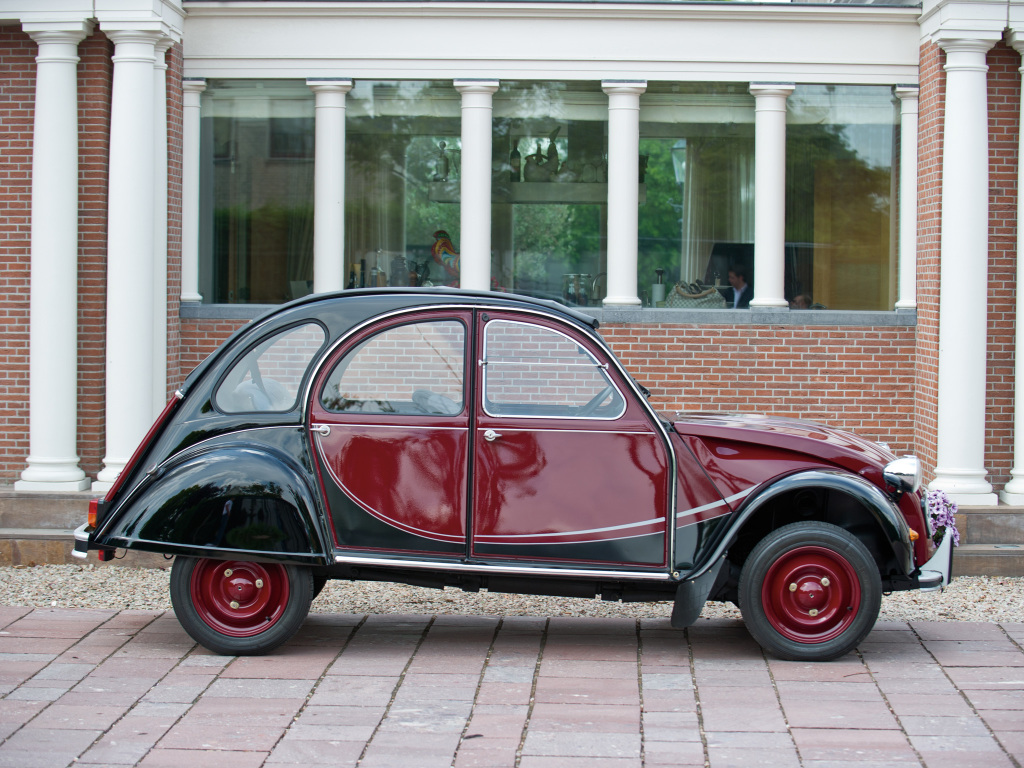
1985: Dolly
The more period-friendly and colourful ‘Dolly’ designation appears, with much greater success than the Charleston. People even begin to call the car ‘Dolly’ in favour of its real designation.
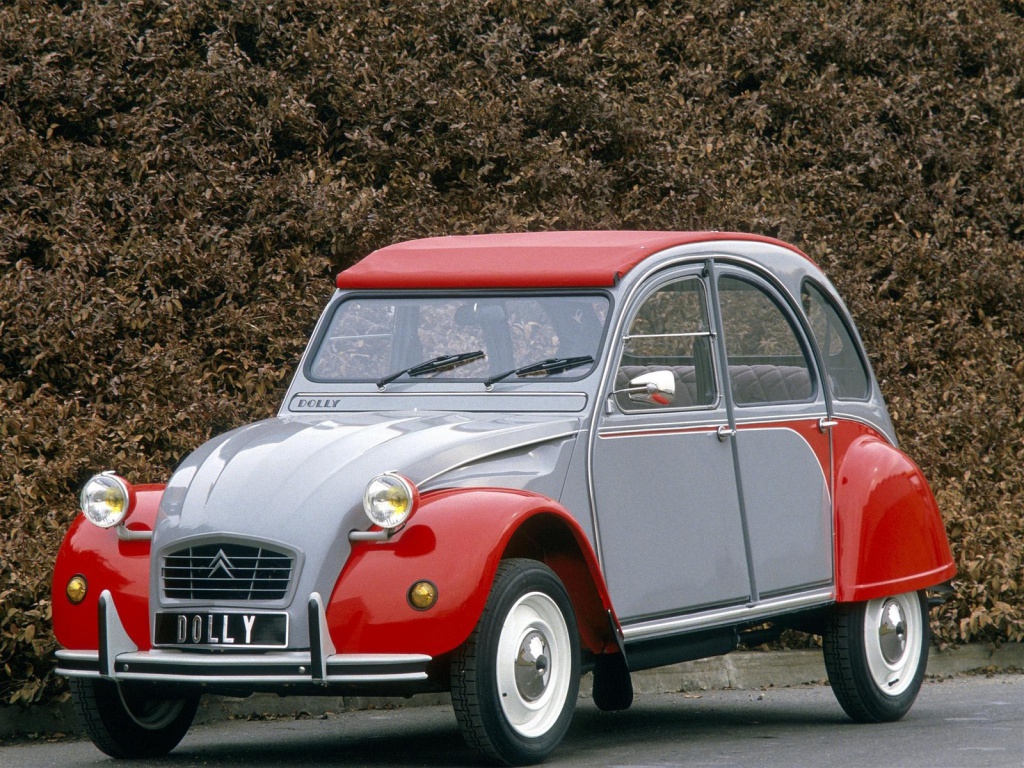
1986; Cocorico
The mystifyingly named Cocorico is the last special edition 2CV to be built in France. Production limps ahead in Portugal, until it finally ceases in July 1990.
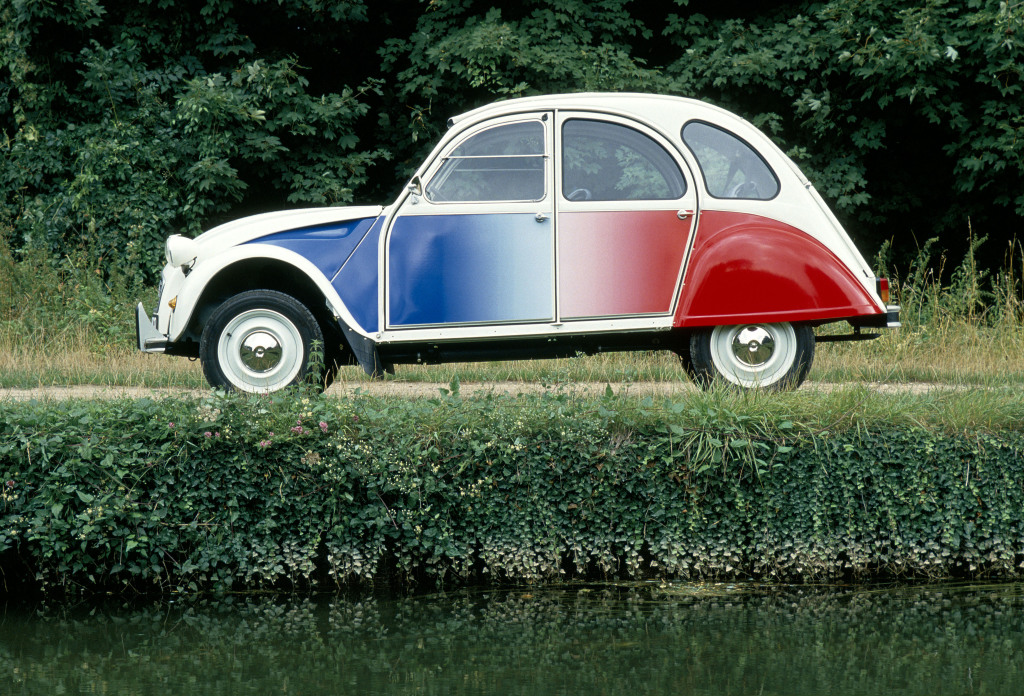
CLICK TO ENLARGE










‘Cocorico’ means ‘cock-a-doodle-doo’